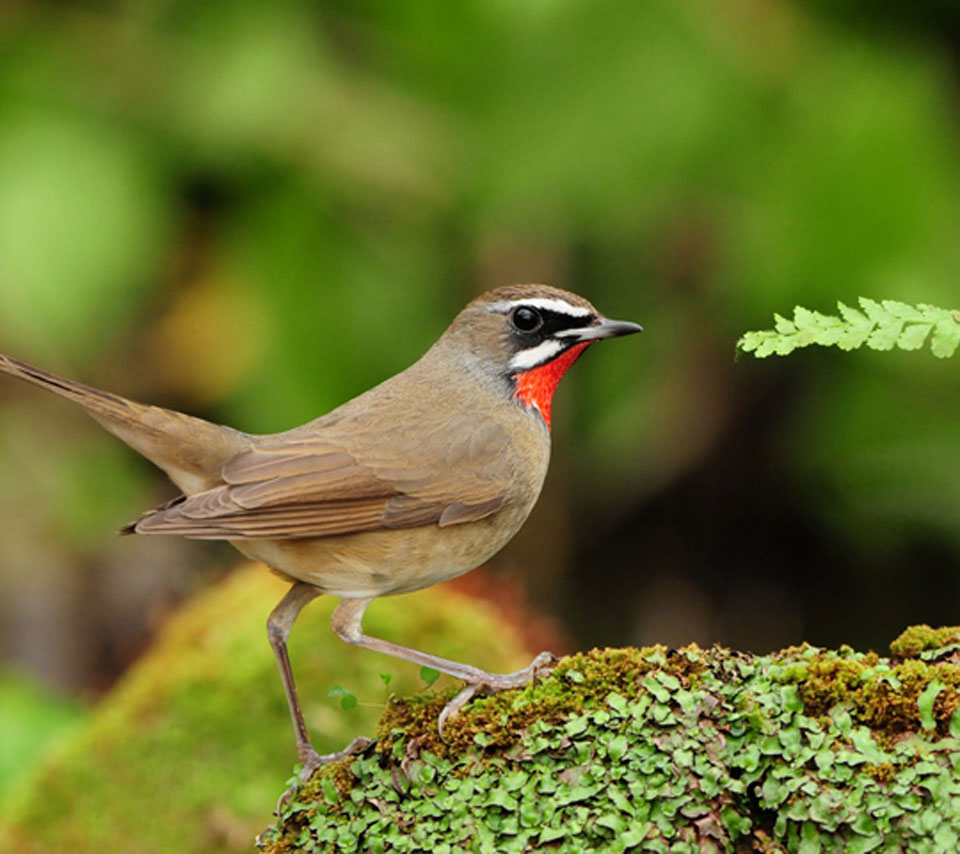
Erithacus calliope
TAXONOMY
Erithacus calliope Pallas, 1776.
OTHER COMMON NAMES
French: Calliope Sibйrienne; German: Rubinkehlchen; Spanish:
Ruiseсor Caliope.
PHYSICAL CHARACTERISTICS
5.5 in (14 cm); male 0.74–1.0 oz (21–29 g); female 0.56–0.78
oz (16–22 g). Brownish upperparts with white eyebrow and
malar stripe. Throat is red (male) or white (female). Males
have light brown beast fading to buff, while females have
whitish buff underparts with a brown breast band.
DISTRIBUTION
Northern and central Siberia from Urals to Kamchatka.
HABITAT
Lowland forest, also up to tree line or above in subalpine
scrub; usually in thickets, boggy clearings, riverine glades, or
meadows.
BEHAVIOR
Solitary or in small, loose parties, usually on or close to the
ground in thick undergrowth, but runs rapidly over open
spaces.
FEEDING ECOLOGY AND DIET
Mostly beetles and other insects, but also various aquatic invertebrates
from riversides and shorelines.
REPRODUCTIVE BIOLOGY
Apparently monogamous and territorial; nests from June–July,
in thick bush or tussock near ground; four to six eggs, incubated
by female, period undetermined.
CONSERVATION STATUS
Not threatened.
SIGNIFICANCE TO HUMANS
None known.
Photo Gallery of - Siberian rubythroat




 Animalia Life
Animalia Life